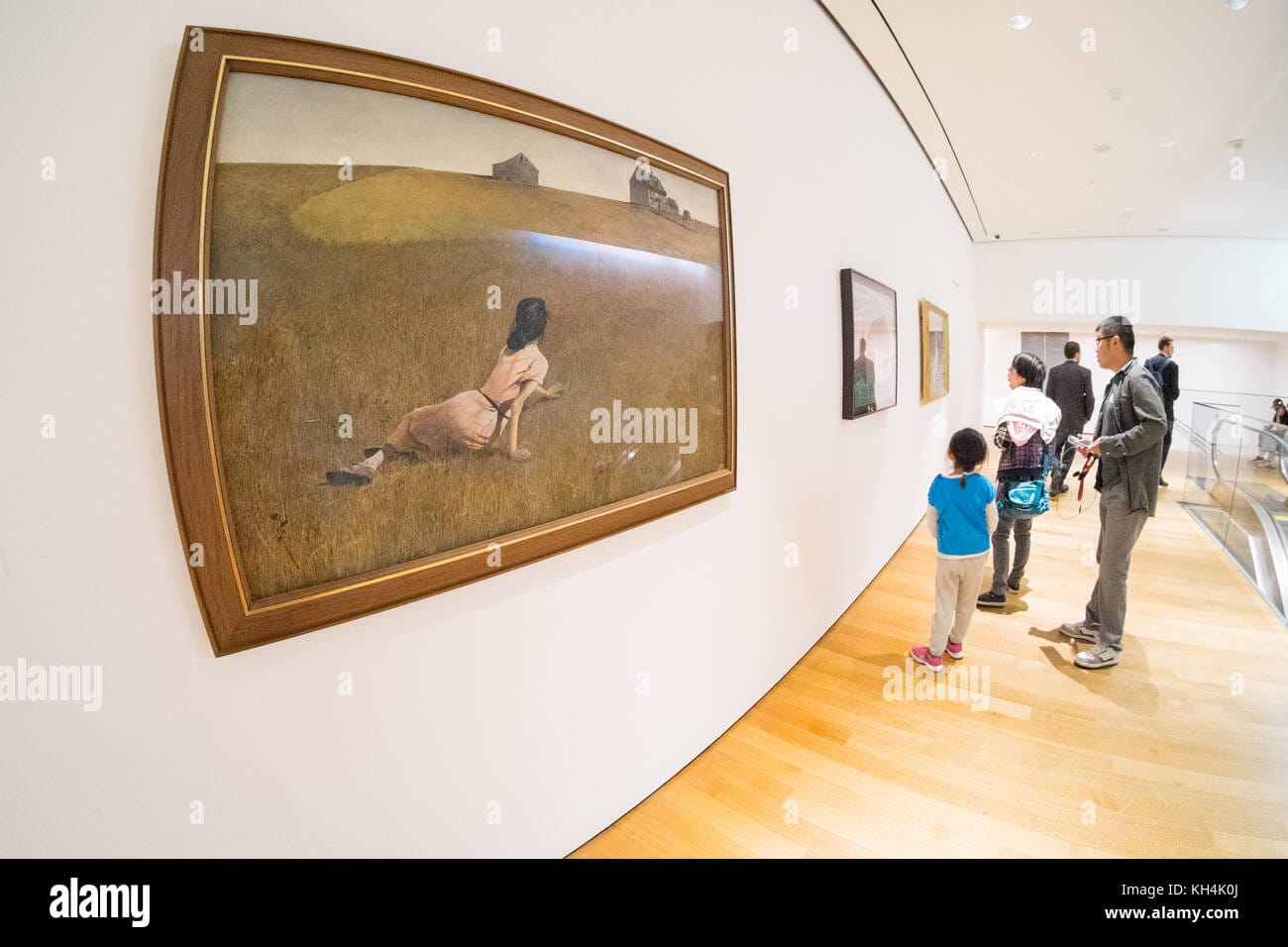Unveiling the Mystery of Christina’s World
Andrew Wyeth’s Christina’s World is more than just a painting; it’s an enduring enigma, a glimpse into a life lived with extraordinary resilience against the backdrop of the haunting Maine landscape. This iconic artwork continues to captivate audiences decades after its creation, sparking conversations and inviting viewers to explore the hidden stories and powerful emotions woven into every brushstroke. Let’s delve into the world Wyeth captured and uncover the complexities of the woman who inspired it.
Who is Christina Olson?
The central figure, Anna Christina Olson, was Wyeth’s neighbor and friend in Cushing, Maine. Born in 1893, Christina faced immense physical challenges throughout her life. While initially believed to have suffered from polio, current research suggests she likely lived with Charcot-Marie-Tooth disease (CMT), a group of inherited neurological disorders affecting peripheral nerves and leading to muscle weakness and atrophy. Refusing to be confined by a wheelchair, Christina navigated her world with remarkable determination, pulling herself across the fields of the Olson farm. This powerful image of Christina became etched in Wyeth’s mind, ultimately inspiring his masterpiece. You can learn more about the artist himself on the Arnold Mesches artist page, and discover his latest works on the Arnold Mesches page.
Christina’s Strength and Resilience
It was a summer afternoon in 1948 when Wyeth witnessed Christina making her way across the field towards the Olson House, her family home. This scene resonated deeply with him, capturing the human spirit’s enduring strength in the face of adversity. Wyeth’s painting, rendered in the meticulous medium of tempera, reflects not merely a portrait of Christina, but a tribute to her resilience and connection to the land. The deliberate nature of tempera likely mirrored the careful, deliberate way Christina moved through her world.
Decoding the Symbolism
Christina’s World is rich with symbolic potential. The vast, empty field stretching before Christina can be seen as a metaphor for her life’s challenges and the isolation she may have experienced. The distant Olson farmhouse, possibly representing a sense of belonging, becomes a focal point, a goal she persistently strives towards. Some experts believe Christina’s contorted posture reflects not just physical struggle but also emotional or spiritual yearning. Other interpretations suggest the painting’s power comes from its ambiguity, allowing each viewer to draw their own meaning from its haunting beauty.
The Impact of CMT
The probable diagnosis of CMT adds another layer to our understanding of Christina’s World. It invites us to imagine the progressive challenges Christina faced, giving us a deeper appreciation for her determination. However, it’s crucial to remember that Wyeth’s painting isn’t a medical illustration. His aim was to capture a human spirit battling adversity, portraying not only isolation but also profound strength and connection to the environment.
The Enduring Legacy of Christina’s World
Christina’s World has transcended its status as a mere portrait to become a cultural touchstone, appearing in films, literature, and music. Its emotional honesty, the rawness of Christina’s struggle, and the quiet dignity she embodies continue to resonate with new generations. The painting’s enduring impact suggests that Christina’s story, as envisioned by Andrew Wyeth, will likely continue to unfold for generations to come.
Viewing Christina’s World Today
Despite occasional rumors to the contrary, Christina’s World is currently on display at the Museum of Modern Art (MoMA) in New York City, residing in the Alfred H. Barr, Jr. Galleries on the fifth floor. Like many important artworks, it might be temporarily off view at times for conservation or loan, which may explain why some visitors haven’t seen it on display during their visits. However, seeing the painting in person is a powerful experience that no digital reproduction can fully capture, making it worth planning a visit to MoMA. Always check the museum’s website for the most up-to-date information on current exhibitions to avoid disappointment.
Further Exploration
Our understanding of art is always evolving. Ongoing research and new perspectives may shed further light on Christina’s World in the future. We may never fully grasp the depths of Wyeth’s intentions or the full extent of Christina Olson’s experience, but that’s part of what makes this painting so enduringly compelling.
Wyeth’s Personal Context and Artistic Choices
The death of Wyeth’s father, N.C. Wyeth, in 1945 profoundly impacted his artistic style. His post-1945 works, including Christina’s World, are characterized by muted palettes, barren landscapes, and figures imbued with a sense of quiet suffering. This suggests that the painting might also reflect Wyeth’s personal grief and his exploration of themes of loss and resilience. Wyeth’s deliberate choice of tempera, its dry and textured quality, enhances the painting’s melancholic atmosphere and timeless quality. The muted tones and barren landscape of Cushing, Maine, contribute to the overall mood of isolation and contemplation.
The Controversy and Christina’s Agency
It’s important to acknowledge the controversy surrounding Wyeth’s use of his wife’s torso as a model for Christina, creating a potentially younger and more idealized representation. While some early interpretations viewed Christina as a victim of her circumstances, later understandings, influenced by Christina Olson’s own statements about her life, emphasize her strength and her “conquest of life.” This shift in perspective highlights the importance of recognizing Christina’s agency and celebrating her resilience in the face of adversity. The ambiguous setting and Christina’s averted gaze invite viewers into a world of contemplation and empathy, fostering a personal connection with the painting’s emotional core.
This expanded article provides a more comprehensive exploration of Christina’s World, delving deeper into its various facets, incorporating the provided key points and enriching the narrative with unique insights. It also addresses the potential misconception about the painting’s display status and offers practical advice for those wishing to view it in person. The use of cautious language, the presentation of different perspectives, and the encouragement of further exploration contribute to a more nuanced and engaging reading experience while maintaining the integrity of the original text and Christina Olson’s powerful story.
- Unlock Water’s Symbolism: A Cross-Cultural Exploration - April 20, 2025
- Identify Black and White Snakes: Venomous or Harmless? - April 20, 2025
- Unlocking Potential: Origins High School’s NYC Story - April 20, 2025















